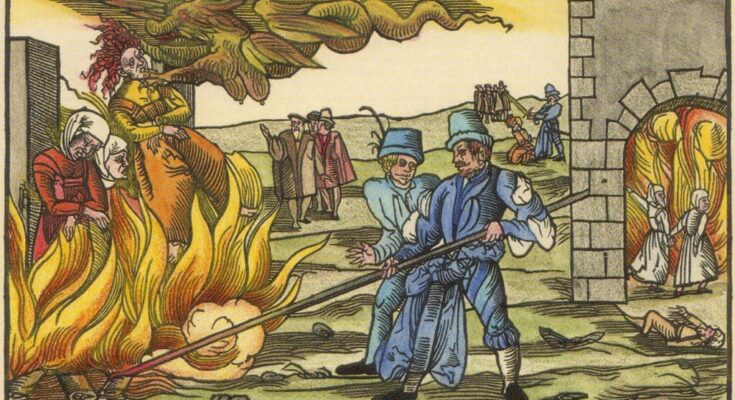
Three Dutch feminists campaign in recognition of the innocent victims of the 15th to 17th centuries witch hunts. They hope to have a national monument erected in their honor.
Part of the campaign involves raising money for the National Witches Monument foundation, chaired by Susan Smit with board members Bregje Hofstede and Manja Bedner.
The three women have raised €35,000 (about $38,000) so far in order to establish an official site in memory of about 70,000 people who died during a Satanic panic that swept across Europe and the US colonies.
Hofstede spoke to The Guardian and said that the killing of witches was essentially femicide, while witches remain comic figures to this day. Every year during Carnival season before Easter Lent in the Netherlands, people burn effigies of witches. The purpose of the foundation is to raise awareness over the fact that the so-called “witches” were, in fact, murdered.
There are three municipalities where the National Witches Monument could be erected. Among these is Roermond, where at least 75 people, mostly women, were burned alive during the most significant witch trials in 1613 and 1614.
In the area of Montferland in the Netherlands, the alleged Dutch witch Mechteld ten Ham was burned alive in 1605 despite having asked for a court trial.
The third potential host city is Oudewater, which had an official witches’ weigh house that issued certificates of innocence if someone’s weight matched their body mass: If a woman was too heavy, she couldn’t be a witch because she couldn’t fly on a broom. In Oudewater today, there is the Museum de Heksenwaag (Museum of Witches’ Scales).
The history of witch hunts in the Netherlands is an issue not covered by history books. Nevertheless, it is a revelation to schoolchildren who visit the museum.

Witch hunts look different today
Isa van der Wee, the museum’s director, believes Oudewater would be an ideal site for the monument. In the 17th century, the town protected women who were prosecuted as witches. Women from all over Europe would find refuge from witch hunts in Oudewater if they were suspected of witchcraft.
Van der Wee spoke to The Guardian about the “witches” who were actually just women that were a bit different, independent, had a strong personality, and stood up for themselves, or otherwise had knowledge of herbs and their healing powers.
In Roermond, which has formally acknowledged the injustice done to victims of its witch hunts as “a dark page in the city’s history,” the mayor, Yolanda Hoogtanders, has briefed councilors that a monument could help with awareness of modern-day issues such as femicide and violence against women.
The three feminists believe that such monument would send a strong political message. The Netherlands Institute for Human Rights points out that the country comes 28th in the World Economic Forum’s global gender gap index. Germany is seventh, while the UK is 14th.
Furthermore, Statistics Netherlands reports that a third of women are not economically independent, women are under-represented in politics and in boardrooms, and one in 10 report unwanted sexual advances at work. There is a national plan to counter femicide and a new law against street intimidation.
According to Hofstede, there is a historical link between the witch hunts of old and the way women are treated in modern day society, where certain outdated gender-based beliefs continue to exist.



